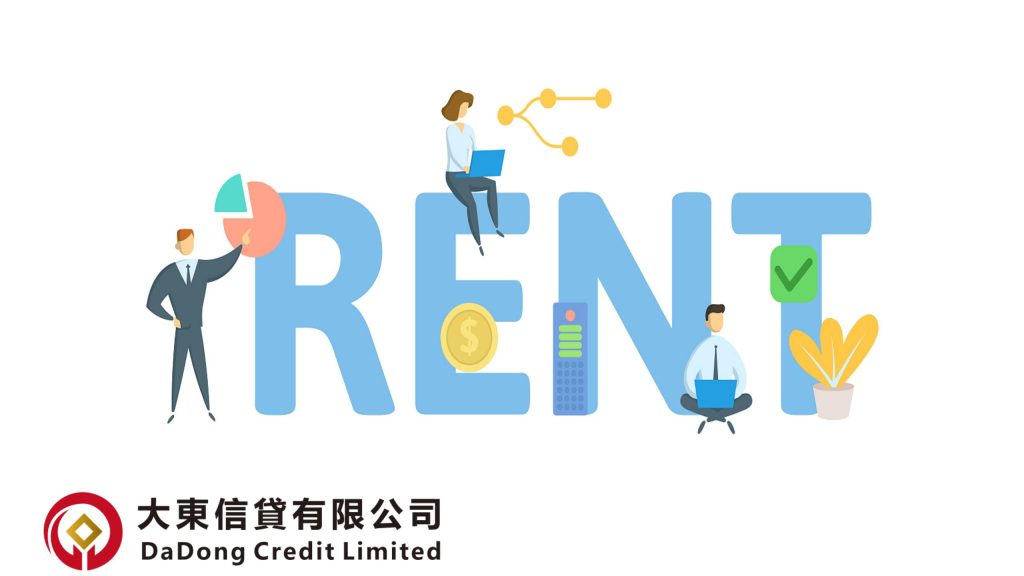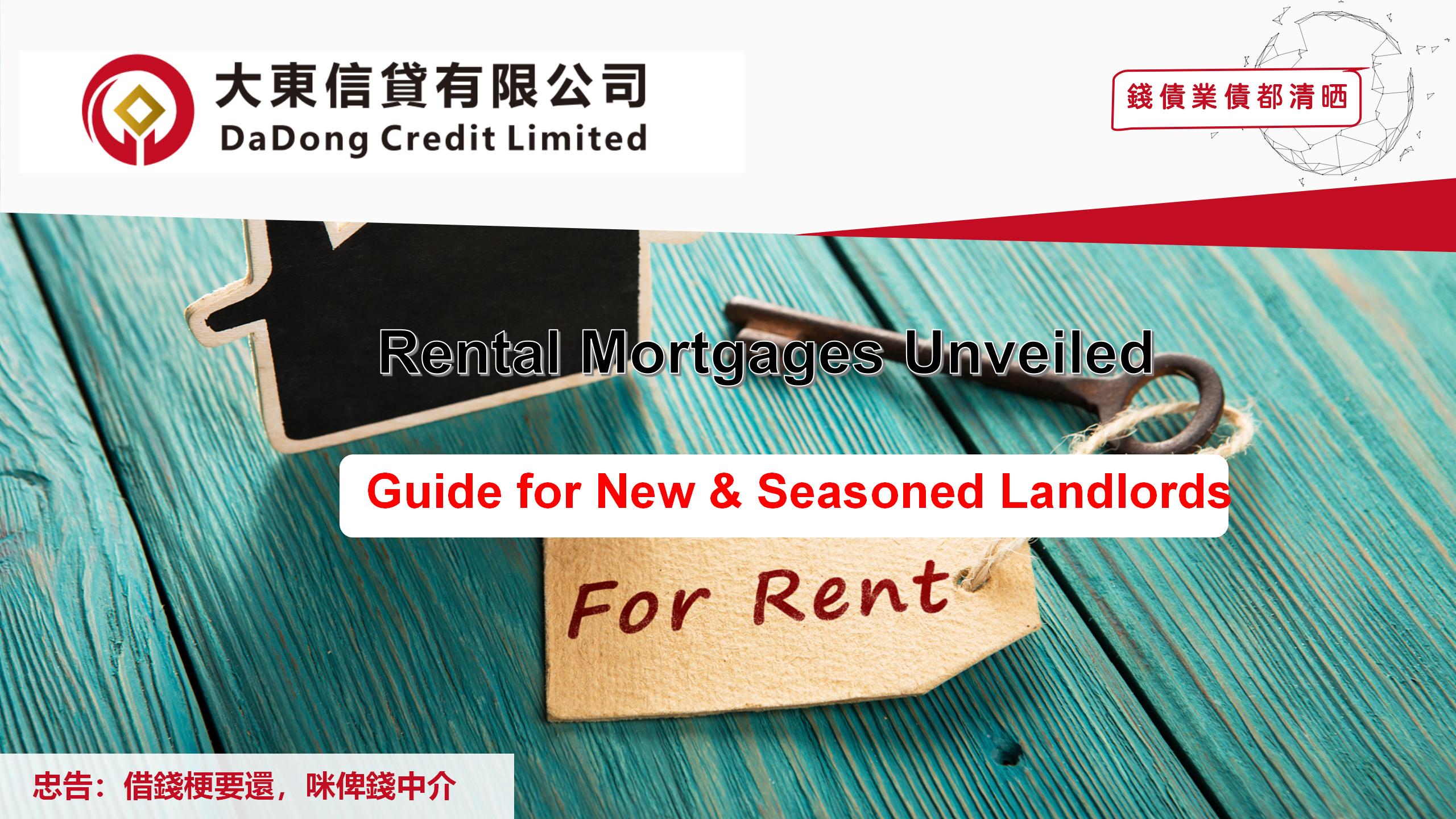
Decoding Rental Mortgages: The Ultimate Guide for Novice Property Owners and Seasoned Landlords to Achieve Hassle-Free and Lucrative Rent Collection | Credit Express by Hong Kong Mortgage Corporation
Investing in real estate for rental purposes can yield substantial returns. Whether you’re a novice investor taking your first steps into the real estate market or a seasoned landlord aiming to expand your property portfolio, a solid understanding of rental mortgages is essential. Rental mortgages involve multiple aspects, including capital management, risk assessment, and legal compliance. These elements not only influence the profitability of your investment but also play a crucial role in maintaining your financial stability and long-term growth.

1. Maximum Mortgage Loan for Rental Properties
- In Hong Kong, the maximum mortgage loan for a rental property typically caps at 60% of its value. Rental properties are ineligible for the 90% mortgage offered under the Mortgage Insurance Programme, which is strictly reserved for self-occupied properties. As a result, rental properties can only apply for a maximum 60% mortgage from traditional banks.
- If you require a higher mortgage amount, financial institutions can be a viable alternative. These institutions offer greater flexibility, often providing second-mortgage services. This allows investors to access additional funds, catering to diverse investment requirements. The actual mortgage amount, however, depends on various factors such as the borrower’s creditworthiness, income stability, and the lending policies of the financial institution. For precise information on the maximum mortgage available, it is advisable to consult directly with Hong Kong-based financial institutions or professional loan advisors.
2. Stress Tests for Self-Occupied and Rental Properties
- Banks implement “stress tests” as a key part of the mortgage approval process. When applying for a mortgage, applicants must clear two main hurdles. The first is the “debt-to-income ratio” assessment, which measures the proportion of mortgage payments to the applicant’s monthly income. The second hurdle involves a hypothetical scenario where the current mortgage interest rate is increased by 2 percentage points, and the resulting mortgage payment should not exceed a predefined level of the applicant’s monthly income.
- For rental properties, the acceptable “debt-to-income ratio” is generally lower compared to self-occupied properties. Some self-occupied homebuyers have the option to apply for high-ratio mortgages through developers. Developers often collaborate with financial institutions to introduce “Developer Mortgage Plans” during property sales. In such cases, the homebuyer first secures a portion of the mortgage from a bank. If insufficient savings prevent the payment of the full down payment, the buyer can apply for additional financing through the developer’s mortgage, known as a second mortgage on the property. Some developers offer lenient mortgage plans that enable homebuyers to obtain a full mortgage without the need for income verification, bypassing the bank’s stress test. This is popularly referred to as the “Breathing Plan.” In this scenario, the developer’s mortgage serves as the primary mortgage.

3. Rental Income as Eligible Income
- When applying for a mortgage on a rental property, rental income can be factored into the stress-test calculations. Rental income can be classified into two categories: actual rental income and projected rental income.
- Actual rental income pertains to a property that is currently leased, with the property owner being able to present a legally stamped lease contract. In such instances, typically 70% of the rental income can be included in the stress-test calculations. If the lease contract lacks the necessary stamp, only 60% of the rental income will be considered. For example, if a unit commands a monthly rent of $15,000, a stamped lease allows $14,000 to be factored into the stress-test, while an unstamped lease limits the inclusion to $12,000. Consequently, property owners with stamped lease contracts enjoy an edge in the stress-test evaluation.
4. Converting Self-Occupied Properties into Rental Properties
- Before converting a self-occupied property into a rental property, it is imperative for the property owner to notify the mortgage-holding bank or financial institution. The institution will then conduct a re-appraisal of the property. If the outstanding mortgage balance exceeds the 60% mortgage limit applicable to rental properties, the owner must make up the difference and obtain a “Consent to Let” document before proceeding with the rental.
- Additionally, a thorough review of the mortgage loan contract is essential to ensure full compliance with all loan terms. Some properties may be subject to management regulations or rules set by the owners’ organization that restrict the right to rent. Owners must be aware of and adhere to these regulations. Moreover, renting out a property may entail various tax and legal implications, such as rental income tax, lease contract stipulations, and landlord-tenant responsibilities. Property owners are advised to comprehensively understand and fulfill all relevant requirements.

5. Mortgages for Purchasing and Renting Out “Sub-Divided Flats”
- A “sub-divided flat” is generally defined as a building unit that has been partitioned into two or more independent rooms, deviating from the originally approved building plans. The buying, selling, and renting of sub-divided flats are often fraught with legal and regulatory complexities, and their viability and legality can vary based on government policies.
- Banks typically adopt a conservative stance when handling mortgage applications for “sub-divided flat buildings.” Not all banks are willing to accept mortgage applications for such properties. If a property owner intends to sell a fully-leased unit to a buyer, the buyer should be vigilant about potential violations of the Buildings Department’s regulations. This includes over-renovation resulting in “unauthorized building works” for rental purposes. Attention must also be paid to building and fire safety regulations. Issues like blocked fire escapes, and compromised drainage and ventilation systems can significantly impact the mortgage application process.
- To safeguard their interests, banks usually conduct rigorous inspections of sub-divided flats for rent, often appointing professional valuation companies to assess the property and conduct building inspections. As such, proper arrangements must be made for units with existing leases. For property owners of “sub-divided flat buildings,” financial institutions can offer a more flexible solution. These institutions are often more accommodating, tailoring mortgage plans to meet the specific needs of clients. For specialized properties like sub-divided flats, the experienced Credit Express by Hong Kong Mortgage Corporation provides expert valuation services, ensuring an accurate assessment of property values.

In summary, a comprehensive understanding of rental mortgages empowers investors to make well-informed decisions in the real estate market. This knowledge not only maximizes investment returns but also serves as a safeguard for long-term financial stability and growth.
#DaDungCredit #FengShuiMetaphysics #PropertyMortgage #LowInterestRates #Mortgage #MortgageLoan #PropertyLoan #RealPersonService #SecondMortgage #ZiWeiDouShu #Finance #Credit #Refinancing #Professional #TopUpMortgage #Numerology #Consultation #PropertyMortgage #FirstAndSecondPropertyMortgage #SMEFinancing #FirstMortgage #Refinancing
立即查詢 物業貸款方案
上述產品受條款及細則約束,大東信貸保留最終審批決定權。
忠告:借錢梗要還,咪俾錢中介
投訴熱線:2666 6728
DaDong Credit Limited 放債人牌照號碼: 0176/2025


發佈留言